Matador Network's Blog, page 2275
April 30, 2014
Mapped: The shockingly empty US
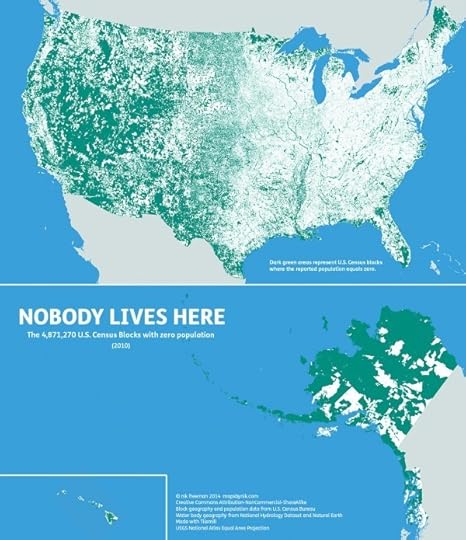
Graphic: Mapsbynik.com
When the US does its census, the smallest measurement unit it goes by is the “block.” In a city, this is what you would think it is: a city block. In the country, the size is more arbitrary. But there are a grand total of 11,078,300 census blocks in the United States…and 4,871,270 of them are totally uninhabited.
That’s what the map above (by the website mapsbynik) shows. Any blocks with even a single person living in them are shaded white, while those in green have no human residents.
The areas that are empty are about what you’d expect: the Maine woods, the mountains and deserts of the West, gigantic portions of Alaska, etc. But that doesn’t make this map any less incredible. You can go one of two ways: either, “There are that many people in the US?” or, “There’s that much wilderness left?” For the antisocial, nomadic, Tyler Durden-wannabes out there, this is basically a where-to-live guide. 
The post Mapped: All the places in the US where no one lives appeared first on Matador Network.

8 tips for slow travel in Thailand

Photo: Mark Fischer
THAILAND IS A MAJOR TRAVEL DESTINATION, and as a result much of its once-untouched landscape and island culture has been modernized and resort-ified. Yet, it still seems remarkably easy to get “off the beaten track” in Thailand. This is due, in large part, to the fact that many first- and second-time visitors simply choose not to (as knowing the language quickly becomes a legitimate necessity and the transportation infrastructure degenerates aggressively the farther from the tourist hotspots — read: Bangkok and Phuket — you get).
The majority of the wonders to be seen in Thailand have become top tourist traps by default, so getting off the beaten path is an undertaking for a different kind of thrill: the experience of true Thai life, synced with the ebb and flow of the weather and the seasons. This makes exploring and experiencing the “unseen” Thailand a great opportunity to break from the hustle of 9-5 culture, and often to find more eco-friendly and fulfilling experiences.
1. Travel till you run out of English speakers.
This seems pretty obvious, but what acts as a deterrent to most travelers is a fantastic guide to determining your level of off-track-ness. Yes, it will mean you’ll need to learn a few key phrases (e.g., 7-Eleven yoo nai krap — “Where is the 7-Eleven?”), keep some key photos on your phone (you know, like a bathroom door), or perhaps have a pencil and paper handy for notes and drawings, but the only way to get properly remote and utterly off the beaten track is to cut yourself off from the world you — and more importantly, all the other tourists — are comfortable with.
This will not only help you accomplish your travel goals and facilitate that proper adventure, but it will also seriously help the local economy, which suffers in areas not immediately adjacent to key tourist destinations.
2. Travel by motorbike.

Photo: Pithawat Vachiramon
One of the easiest ways to traverse Thailand, and the easiest way to find the path-less-traveled, is by motorbike. Even on well-worn circuits (like the 3-hour stretch from Chiang Mai to Pai via Route 1095) becomes very much an individualized experience as you travel farther north and with the freedom a motorbike provides.
Additionally, the motorbike is probably the most ideal way to explore the multitude of islands surrounding Thailand. Yes, some may get a little hairy if you’re an inexperienced biker (like the rougher and steeper roads to the better beaches on the northern and eastern edges of Ko Pha Ngan), but by and large the best (and most cost-effective) way to set out is on motorbike — particularly since the cost of motorvehicular freedom is about 600 baht ($18.61) daily out of Chiang Mai, and fuel only 39.27 baht ($1.22) per gallon.
3. Go north(east).
Generally, the northern half of Thailand is the best place to leave the souvenir stalls behind and enter the true “land of smiles.” To start, here are some key regions to visit when planning your trip off the beaten path:
Isaan
You know you’re on the right track when the Wikipedia page for the place lists “Buddhist monks” as the first subcategory under “Notable natives or residents.” Literally translating to “north east direction,” this massive section of northeastern Thailand is home to a third of the native population, but only sees about 0.31% of the nation’s overall annual tourists. Sure, there are some key touristy hotspots in Isaan, but even those get routinely skipped over by the week- to week-and-a-half traveler starting in Bangkok.
Perhaps you’ll hit up the Mekong riverside in Sangkhom to do a little hammock lounging. Perhaps you’ll go to Nakhon Phanom province to see the oldest temple in Thailand (That Phanom), before jetting up to Loei province, at the northern tip of Isaan, to explore its many peaceful river towns. Regardless of where you wind up, Isaan has it all: national parks, mountains and rivers (often with accompanying temples, like the Wat Phu Tok mountain temple and Erawan shrine), ruins, and a near-endless sea of rice paddies.
The North
Northern Thailand is something of a hub for backpackers and long-holidayers. As the nexus between Thailand, Laos, and Myanmar, Northern Thailand is a cultural blend of the three, and time should be allotted to teasing apart the Laotian and Burmese influences on the Thai regions.
Backpackers gravitate to the North to lose themselves in the legendary trekking and motorbiking circuits (such as the well-known ones in Chiang Mai, and the lesser-traveled ones in Nan), so it’s a perfect place to get outdoorsy and carve your own path. The remote Nan province in particular, right at the Laos border, is a great place to explore between its three major towns and six national parks.
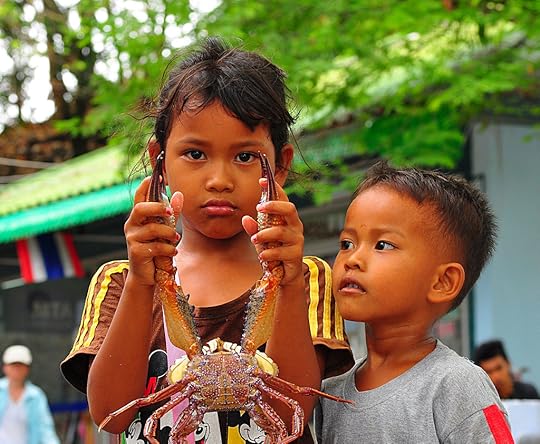
Kids on Ko Phi Phi. Photo: Davidlohr Bueso
4. Follow the coast.
Thailand’s beach culture is justifiably legendary, considering its 2,000 miles of coastline and 85-degree summer days. This becomes incredibly evident when traveling to any of the many heavily populated beaches (such as the majority of the Krabi coast). But follow that coast a little farther, and you’ll discover the beaches that don’t make the “Top 10″ lists, but wind up more beautiful in their isolation.
Take Railay beach in Southern Thailand, for example. It’s a killer beach, and many make a day trip out there for sun, surf, cave exploration, and climbing. As a result, it’s also become home to a dozen or more luxury resorts and is now super touristy. Follow the coast north a bit, however, and you’ll wind up at Tonsai beach. Just as sweet, less than a third as populated. Plus, Tonsai is super laid back, and a great place to grab a freshly ground chai or coffee and learn some slacklining or firedancing.
5. Explore the islands.
Thailand has a ton of islands, way more than I can list here. For example, the island group in Phang Nga Bay comprises 67. Some islands are big enough to house full resorts, while others (many of which are privately owned and readily and cheaply available for rent) are much smaller and have accommodations for only a few, but are as off-the-beaten-track as they are ideal getaways for a peaceful and remote stay.
Among the best are the islands in Trat province off the Andaman coast. Take Ko Kut, which has been described as “so off-the-beaten-path you might get bored,” or Ko Chang, the second largest Thai island after Phuket and the last “cheap” island — large enough to find some solid secluded spots.
6. Don’t rule out any day trips.
Many incredible Thailand experiences remain incredible because they don’t, at first glance, seem quite as appealing. Take Doy Din Dang pottery studio, seven miles north of Chiang Rai. Meaning “Red Clay Hill,” Doy Din Dang is a pottery studio in the middle of jungly nowhere, and is the home of Somluk Pantiboon, an internationally renowned master potter. He gathers every material he uses from the land and supplies a lot of the ceramicware you’ll encounter at local restaurants. You can also sample some homegrown coffee that’s supposed to be quite epic, so all around it’s an awesome trip that would likely never have occurred to you in the shadow of white temples and giant golden buddhas.
Alternatively, check out the Bo Klua salt wells outside of Nan. They’re thought to have been in use for over 800 years and tap into brine from ocean water trapped underground for millennia. The water is pulled up to the surface and boiled off to access the salt. Again, totally remote and not terribly exciting at first glance, but an awesome way to get utterly off the tourist grid.
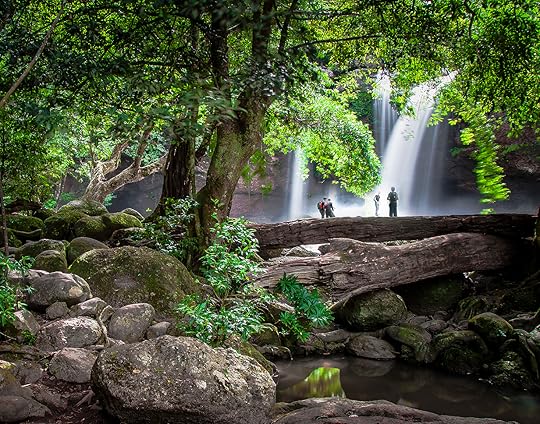
Photo: Prachanart Viriyaraks
7. Ask the locals.
If you must start your trip in one of the huge touristy cities in Thailand, fear not…there are still some amazing “unseen” areas and neighborhoods well within city limits. Want to find where all the locals hide when the sea of tour buses shows up? Ask someone (and enjoy the benefit of being able to communicate with them in your native language). Of course, be wary, as some locals in the tourist districts will have their own agendas, but for the most part you’re likely to discover some legit locals-only spots by talking to the notoriously friendly people of Thailand.
Want some peace? Try spending a stint at a wat and explore the Buddhist culture of the country. For something altogether different, have someone direct you to the part-store, part-museum Papaya Vintage Shop in Bangkok, or go to Phang Nga in Phuket on your own between tours. Finally, when you’ve exhausted all the resources within the city, venture just outside them — for example, to Amphawa, just west of Bangkok, where you’ll find a kickass floating market on the weekends.
8. Travel slow.
The best way to get off the beaten track in virtually any destination is to give yourself enough time to do so. Sometimes this means having enough time to find that fork in the road that takes you to the San Kamphaeng Hot Springs outside Chiang Mai. Sometimes it means having enough time to let a two- or three-day stay at Wat Suan Mokkh become a week-long experience.
The only way to find what you’re looking for, to touch those furthest obscure regions, is to be around long enough to identify what those regions are, and the idiosyncrasies that define each and its inhabitants. If you’ve come to experience true Thai living, you really have to give yourself the opportunity to live it — slow down. Stay awhile.

Here’s your chance to give back and promote socially responsible travel to Southeast Asia. The Tourism Authority of Thailand is giving three groups of friends the opportunity to explore Thailand and participate in volunteer community projects that are helping make the world a better place. Enter today for your chance to win.
The post 8 ways to get utterly off the beaten track in Thailand appeared first on Matador Network.

April 29, 2014
Traveling in death’s shadow

Photo: Nicolas Alejandro
MY WIFE ANITA and I walked wearily, as if in a trance, beneath the hanging yellow signs and brushed aluminum fixtures of Amsterdam’s Schiphol airport. Bleary eyed, looking ahead, silent. The call had come just after midnight on Monday. It was Orsolya, Anita’s sister, and as if she already knew, Anita cried out, “Anya!”
Their mother had died. After a brief stay in hospital, she had quietly passed in her sleep. She was 59 years old.
Drowned out by a thousand tears punctuated by anguished cries, two sisters grieved together, thousands of miles apart, consoling each other in Hungarian. I will never forget those moments: being awakened by the ascending piano ring tone, feeling powerless to soothe my wife’s pain, and then the sleepless hours of disbelief that followed.
It was now Saturday morning. After leaving Los Angeles on Friday afternoon, we were zombies trudging towards our connecting flight to Budapest.
Schiphol was humming; rolling luggage was whisked across the gleaming floor by well-dressed people with places to be. Those in suits with angular haircuts fit right into the airport’s backdrop of sleek metal and glass. Others swooped about in bright parrot-like outfits, symbolic of the tropical paradises I imagined they were off to.
We didn’t have much time before our connection, but after a ten-hour flight, Anita insisted on finding the smoking lounge. While she puffed away inside her quarantined glass box, I leaned on the railing and stared out over the scene below me. In the arching green steel and glass conservatory of the Grand Café Het Paleis, people drank coffee, ate plates of bacon and eggs, pastries and baguette sandwiches. A group of British teenagers finished up their breakfast at a table near me on the upper deck. “That was quite nice, that,” one of the ponytailed girls said chirpily.
I had never traveled under such somber circumstances, and the pleasure of others was beginning to annoy me. The people below, pulsing like blood cells in an artery, the cockney chatter and the glittering shops with their garish luxuries seemed vulgar and meaningless. Death had put life in perspective.
I gazed off into the dull, grey sky through the wall of glass to my left. A woman announced something in Dutch over the loudspeaker, but all I heard was an indecipherable mixture of “oo,” “ah,” “jah,” “kah.” Thoughts pinballed around my head as I played over the past week. Buying the plane tickets had been robbed of its usual joy. Our taxes were due, as was rent, and work had begun to pick up after the winter slowdown. This wasn’t good timing, this wasn’t part of the plan, I thought. But since when has death kept a schedule? When is death on time?
In a rare moment of absolute clarity, the jigsaw pieces in my head slid into place. Money, the IRS, work — overshadowed by death, the insignificance of these things was blissfully liberating. I was right where I needed to be. The person who taught my wife to cook, how to love and how to be a woman…was gone. Life often plays out in recurring cycles, but the death of your mother — the one who gave you life — happens only once.
The glass door slid open and Anita came out of the smokers’ lounge. We walked past a peculiar yet soothing artificial nature scene; plastic trees and bushes sprung up and birds chirped from hidden speakers. Holding hands, we neared Gate D71 AMS-BUD. Conversations in French, English, and Dutch floated from the crowd of antsy travelers. Amidst the cosmopolitan clamor, the familiar sounds of Hungarian came from the mouth of a bushy-haired man speaking softly and assuredly to his elderly father.
Regardless of the circumstances, we were going home. 
The post Traveling in death’s shadow appeared first on Matador Network.

How to stand out as a tourist in DC

Photo: Aaron Webb
Take pictures in front of the monuments.
No one currently living in DC is taking pictures of themselves in front of the White House or the Capitol building. They certainly aren’t angling the photo in a way that the Washington Monument looks like a dick. No, real DC residents are taking pictures of themselves with the people living and working inside those monuments. And then posting those pictures in highly visible spots on office walls to show off their proximity to power.
Be here during the Cherry Blossom festival.
Back in 1912, the Mayor of Tokyo gifted Washington a bunch of cherry trees. Now, each year, there’s a National Cherry Blossom Festival whenever it is the cherry blossoms end up blooming. People walk around, look at the beautiful trees, and celebrate the coming of spring.
It’s a complete fucking nightmare. The thing is, there’s something happening in DC pretty much every single day of the year. There’s always some commemoration or protest or parade or event. There are countless parties and galas and art openings. So you can come literally any weekend, and you’ll get a big showing. The blossoms aren’t that great. And you guys step out in the street to take pictures and block traffic.
Refuse to drink early in the day.
You’re on vacation, bro. Do you know what the people running the most powerful government in the world do when they get a vacation? They get hammered. They get sloshed. They definitely don’t go to museums. If it’s a Bloody Mary or a mimosa, it counts as a breakfast beverage. Drink up. No one says, “It’s five o’clock somewhere!” in DC, because the only qualifier that matters when drinking here is, “I’m not on the clock.”
Wear your souvenirs before leaving.
This is actually true of everywhere. Seriously, don’t buy a “Lincoln Memorial” t-shirt and then wear it here. It’s weird. You wear that at home as a conversation starter. We don’t care that you’ve been to the Lincoln Memorial. We went there our first weekend living here and have never returned.
Take a tour.
The National Mall is a legitimately awesome place to hang out. It’s blocks and blocks of park, bookended by some of the country’s most beautiful memorials, so locals actually do occasionally hang out there. But it’s almost exclusively to play intramural sports or attend some event our boss asked us to go to. We never ride around the Mall on Segways with some helmeted jackass in the front telling you why half of the Washington Monument’s stones are a different color than the other half. You know why? Because it’s Washington. Literally every fact that could possibly interest you about this city is written on a placard directly in front of that thing that fact is about. You don’t need a tour.
Be oblivious to traffic.
I have no problem whatsoever with jaywalking. It’s inevitable in a big city, and I don’t mind if you do it. But you do not jaywalk directly into oncoming traffic. Just because you’re in an unfamiliar city doesn’t mean the same laws of physics that apply at home don’t apply here. That truck will crush you into a paste if you step in front of it. You do need to cross at a crosswalk in heavy traffic.
Spend time in Georgetown.
Unless you’re super rich, are on a fancy date, or are a student at Georgetown, literally no one ever goes to Georgetown. It’s a great place to shoot movies, it’s a pain in the ass for everything else.
Ask us if DC is anything like House of Cards.
No. It is way more boring here.
Stay downtown.
There’s some cool stuff downtown (the area near the Mall), but it’s mostly geared towards government institutions, businesses, and tourist spots. Relatively few people actually live downtown. There are a ton of awesome neighborhoods just outside the city center that have a ton of good bars and restaurants and parks. There’s trendy Dupont Circle, the hipster-y Atlas District, the gay Mecca of Logan Circle, the brotastic Adams Morgan, and the music-lover’s paradise of U Street. Branch out. There’s other cool shit out there. 
The post How to stand out as a tourist in DC appeared first on Matador Network.

Cape Town's newest street mural
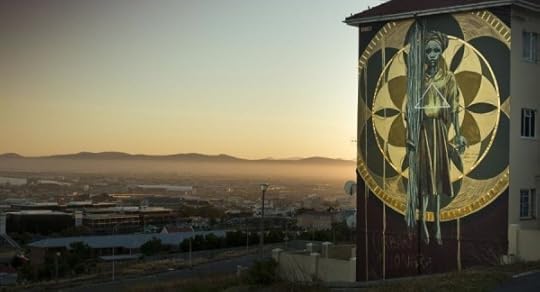
Photo: AnotherLightUp.com
On the southern-bound stretch of Cape Town’s De Waal Drive, there’s a wall with a story the locals all know. I remember driving past it on early mornings and dusky evenings on my way out of the city. For years the wall brandished a mural of a woman carrying a TV on her head; she was at once a labourer and goddess. She became a part of each commuter’s daily journey, and an icon of our city.
The mural questioned the future of cultural expression in a media-driven world. It was a collaborative effort by both local and international painters, one of whom is Faith47 — arguably Cape Town’s most famous street artist.
This year our city was granted a new icon, a new goddess to guide us home. Faith’s new mural, entitled The Harvest, has replaced the original, and may be an even more powerful statement about Cape Town and the area once known as District Six.
This historically charged neighbourhood was home to one of the most infamous forced removals in apartheid history. In 1966 it was zoned as a white-only area, and over 60,000 residents were evicted. Their houses were destroyed and they were required to take up residence in the Cape Flats — the name given to outlying areas of the city.
One such area is now called Khayelitsha, meaning “New Home” in isiXhosa, where 82% of the residents still live in corrugated-iron housing, despite the 20 years that have passed since the election of a new, democratic government. It’s known as one of the most dangerous areas in Cape Town, and in a recent survey three quarters of the residents said they felt crime was intolerably high. 87% of crime affects 19- to 35-year-olds, with crimes such as rape, child abuse, and murder being most common. While some residents returned to District Six in 2004, most are still living in areas such Khayelitsha, without adequate housing and in communities riddled with desperation and crime.
It seems appropriate, then, that the mural is aiming to combat crime in Khayelitsha. The Harvest is part of a project, Another Light Up, pulled together by organisations in the city: Design Indaba Trust, design company Thingking, and an NGO called VPUU (Violence Prevention through Urban Upgrading).
The intention of Another Light Up is to install street lights on a stretch of road linking two water sources in Khayelitsha. The daily journey to fetch water will be made safer, as well-lit areas are proven to be more secure for residents. Another Light Up is raising the funds for 80 street lights in six months, and Faith’s mural is their greatest call to action. Every time enough money is raised to install a street light, a smaller symbolic light is added to the mural and the wall is lit up for the night.
In many ways, Faith47’s mural has also become an act of remembrance. For all us privileged suburbanites driving home, out of the city, the wall reminds us of those for whom home is already dark: without light, without hope. Our habitual act of ignoring and forgetting the darker parts of the city is interrupted, and for a moment, as Faith47 explains, the project is “connecting people and places that are otherwise very disconnected.”
Make a donation to #ANOTHERLIGHTUP to help fund lighting in Khayelitsha. All funds are managed by the nonprofit organisation Design Indaba Trust. Each individual who donates $500 or more will receive a limited edition, archival, signed print of the wall. 
The post The story behind Cape Town’s newest street mural appeared first on Matador Network.

What it'd be like to fly over NYC
We’ve all seen what New York looks like flying between the skyscrapers and over the parks, because we’ve all seen the awful Spider-Man movies. But now we live in a world with remote-controlled helicopters and GoPro cameras, so if we want to see the streets of New York from above without having to cringe at Tobey Maguire’s acting, we now have an alternative.
The video was shot by aerial filmmaker Randy Scott Slavin, and was possibly not shot legally, as some of these shots would require a permit. So don’t necessarily jump up and do the same thing unless you check out the rules. Aerial “drone” photography has taken off recently thanks to smaller cameras and better RC helicopters and quadcopters (like the DJI Phantom used for this video), and the end result is that we get some really spectacular views. 
The post Here’s what it would be like to fly through New York City appeared first on Matador Network.

5 crazy ways to get over shyness

Photo: Kathy
1. Host Couchsurfers.
Even a couple of years into my travels, I was still a little awkward around people I didn’t know well. I didn’t know what to talk with them about. The catch-22 here is that you can get more comfortable the more time you spend with people, but how do you get that time in the first place if you’re too awkward to be around?
That’s when I discovered Couchsurfing, and realized that I could invite interesting people to my city and hang out with them for several days at a time. I felt useful because I knew the city better than they did, and I would research the history to give them a walking tour. Talking about my home was easy, provided instant conversation ideas, and helped us get into other topics.
Also, when someone stays at your home, you have breakfast together and hang out more than you normally would. They may be a complete stranger at first, but you get comfortable and can learn to open yourself up a little better. Best of all, the site has a review system so you know you can trust them before inviting them into your space.
2. Become an amateur photographer.
I’ve never liked the idea of drinking to become more social. For one thing, it’s very limiting that you can only be more outgoing on Friday and Saturday evenings. What if an opportunity to be social suddenly springs up at 3pm on a Tuesday?
As idealistic as I can be here, though, the fact of the matter is that people at social events can feel uncomfortable if they don’t have something in their hands. So rather than give in to peer pressure, I’ve found that having something to hold can actually ease the tension…and give you an interesting conversational starter.
What I did in university was save up for one of the very earliest digital cameras. The display was a tiny LCD screen, but big enough to see the photo just taken. I made myself the official “campus photographer” and went around with that camera and no actual photography skills — and amazingly having a full hand meant nobody pushed drinks at me anymore.
Another great thing is that the camera itself helped me make friends. I’d simply walk up to people and say, “Hi, can I get a photo of you for the university website?” and they’d say yes every time. All I had was a basic static page that happened to be hosted at the university, and I’d post the photos I’d taken for everyone to find later. It worked great, and soon after I got more popular as “the photographer,” since nobody else at the time was putting photos online.
This tip is harder now (everyone and their dog can upload photos to the internet in an instant), but there are many other things you can do to help make parties run better. When I was at Burning Man, I handed out free earplugs (a tub of 200 of them cost $10) since it was a noisy event and sleeping was hard. At concerts, I’ve used an app that makes my phone look like a candle and held this in my hand instead. Made me so many friends!
Another fun one was when I was in Valencia (the first time when I was 21), I managed to find a tandem bike for a really good price. I made friends (nearly always male) by offering a ride home to anyone who needed it, since I had space to carry them.
Finally, I’ve found that carrying around random confusing items as a conversation starter can work wonders to encourage other people to talk to you and take some of the edge off you always having to initiate conversations.
I find people’s “peer pressure” to drink is not as much that they need you to drink, but they don’t see you doing something or having fun, and want to change that. Simply not looking like you’re awkwardly “missing something” changes everything at these events, and if you can bring something that can make the event more fun, all the better.
3. Clink first, ask questions later.
I think the biggest problem I had when I was shy was thinking myself out of perfectly good opportunities to meet people. Someone interesting would be right there, beside or in front of me, and I’d start thinking about what I should say to them, or maybe phrase out a good opening conversation thread that could last at least 10 minutes, or wonder if maybe I’m too boring to talk to them, or what if they’re in a bad mood tonight and don’t want to talk to me…
And before I knew it, I’d been thinking so long the opportunity had come and gone.
Now that I do interact with so many people at social events, I can let you in on a little secret: Most people don’t have very clever conversations and nothing needs to be over-analysed. In fact, I have indeed messed up and said something really strange in my intro, but then laughed it off and gotten into a normal conversation.
This is why now I have a strategy of simply walking up to someone and saying, “Hi! I’m Benny from Ireland, what’s your name?” and seeing what happens. The most important thing I think about before I approach anyone new…is nothing.
I like to call this my “glass clink trick.” I introduced it to a friend in Germany who wanted to practise English by simply grabbing her hand and forcing her to clink glasses with some Americans — I then ran away. Her time to think of something “clever” to say had been taken away, and she simply had to say “Hi” and go from there. Two hours later, she told me she’d been practising English all night!
4. Embrace your inner Klingon.
While actually speaking Klingon (yes, I do) to strangers can be equivalent to nuking your chances of making friends, I’ve found that finding extremely specific common interest groups and attending them has made making friends WAY easier.
When I first started traveling, and was still unsure of what to talk about with strangers, I found groups about particular topics I knew I could talk about to be a great way to get me to open up. Since I was into language learning, I attended meetups with language learners.
There are events on meetup.com, on Couchsurfing’s meetup pages, and on Facebook if you search for events in your city where people informally get together to talk about what they’re passionate about. If you’re into chess, flying kites, dog walking, yoga, coding websites, or anything else, you can find a group to meet with.
And whenever I’m in the States, I find it so curious how specific conferences can get! There are conferences not only for bloggers, but specifically for travel bloggers, wine bloggers, and finance bloggers. I of course attended the Star Trek convention, and finally found my online polyglot conferences.
So think about what you’re passionate about, and search around for events where people with that same passion come together. You may be surprised how your specific interest has so many people finding one another thanks to the internet, coming together every week or once a year.
5. Aim to fail.
One of the most intimidating things for me in my early travels, when I’d arrive somewhere new and know absolutely nobody, would be to go to a social event completely alone and need to make friends. Those initial attempts are crucial to having a positive experience over the next months, and this is a lot of pressure. At times I felt like if I didn’t do it perfectly, I’d be solo my whole trip.
And then I had an idea from a friend of mine to try social skydiving, and just go up to as many people as possible and realize the more I try, the more likely I am to make a friend. While quality trumps quantity every time, you need a little quantity at first to meet the right people. Otherwise, your first attempt could be to make a friend with someone totally unsuited to hanging out with you, and how poorly it goes can intimidate you and deflate your ego for the rest of the night.
That’s why my new approach was not to get nothing but positive interactions, but to go into each interaction with the mindset that “this attempt to make a new friend may crash and burn, and that’s okay.” I would try my best and accept failure to be not only an option, but a likely outcome most of the time. Aim to fail.
Amazingly, it turns out strangers don’t want to bite your head off, and you get pleasantly surprised the vast majority of the time. Your confidence comes across as a charming character trait and people want to get to know you better. I went up to new people faking being confident so many times that now I kind of am.
Go up to more people, act confident, and accept that maybe they won’t buy it and excuse themselves. Shrug it off and try again. Rinse and repeat and you will have new friends by the end of the night. 
This post was originally published at Fluent in 3 Months and is reprinted here with permission.
The post 5 crazy ways to get over shyness immediately, no drink/drugs required appeared first on Matador Network.

How to piss off someone from Chicago
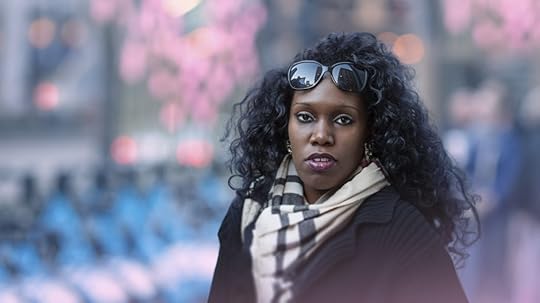
Photo: Aurimas
Chicago has a reputation. Actually, a lot of reputations — some we’re proud of and some make us cringe. You might think you’d piss off someone from Chicago by talking about our corrupt politicians, rampant gang activity, or how the Cubs are one of the most losing teams in baseball. But most of us won’t argue with you about that stuff.
Here’s what’s likely to really piss us off:
Say “Chicago is a great city, for the Midwest.”
There’s nothing we hate more than having our city described as the second city to New York. Not as cosmopolitan, not as edgy, not as cool. We’ll say we don’t care, but we really do have a chip on our big shoulders about this.
We don’t need to be compared to anywhere else. And on that subject, do not:
Claim that New York pizza is better than Chicago pizza.
Really? You’re telling me you’d rather eat that skimpy foldover while standing on the sidewalk, when you could sit down with a knife and fork to a majestic triangle of Chicago deep dish, piping hot, filled with Chicago pride and love? Does that skinny New York slice even make your eyes roll back in your head?
I didn’t think so.
Mention the last skyscraper built in Chicago was Trump Tower.
Have you ever met anyone who likes Donald Trump? Me neither, but I live in Chicago. He’s all New York arrogance, and he built a very tall, shiny new skyscraper on our breathtaking Chicago skyline.
Actually, it’s quite a handsome building, and we have to admit we kind of like it. But Chicago invented the skyscraper, and don’t you forget it.
Don’t stare out the car window with your mouth open as we drive down Lake Shore Drive.
You should be flabbergasted, mouth agape. This is as good as cities get.
The sun is glistening off Lake Michigan, dotted with sailboats. Runners, bikers, and skaters fill the lakefront path in an expressway of cardiovascular happiness. There’s Soldier Field, three of the country’s most magnificent museums, Buckingham Fountain shooting water 150ft into the air. Amazing skyscraper after amazing skyscraper. Millennium Park, the Bean.
Yes, we’ll try to slow down — we never get tired of it either. You’re welcome.
Ask if we’ve ever been shot.
The media really glommed onto Chicago being named the murder capital of the country last year. We know. It’s not cool. And it’s not the takeaway we want you to have from our city.
Disrespect the ’85 Bears.
If you don’t have an almost holy reverence for Coach Ditka, Walter Payton, Jim McMahon, Refrigerator Perry, and the best defense of all time (yes, this is a fact), you should just sit back and listen when this topic inevitably comes up.
Saturday Night Live’s “Superfans” sketch, the Superbowl Shuffle, Ditka moustaches, and sweater vests saying “daaaa Bears” — we still love it all. Don’t say something stupid like, “That was almost 30 years ago, are the Bears still any good?” or question why we get so geeked out about the team. You’ll just get a look of confusion and indignation.
We’re starkly divided about our baseball teams (south side = White Sox, north side = Cubs), but everyone loves da Bears. And if you’re a Packers fan, you should really just keep that to yourself. Trust me. 
The post How to piss off someone from Chicago appeared first on Matador Network.

April 27, 2014
B-day traditions from other cultures
It’s the YouTube channel Mental Floss’s birthday, and to celebrate, they’ve compiled a list of birthday traditions from all over the world. While in retrospect it’s obvious, the thing that surprised me most about this video was the realization that people haven’t always celebrated birthdays, and that it’s not a tradition held across all cultures. I suppose I just can’t imagine a world where my family and friends don’t shower me with cake, love, and presents on at least an annual basis.
Anyway, there are some great and strange traditions in here, and you should give them a try. The most inexplicable to me comes from Canada, of all places: spreading butter on the nose of the birthday boy or girl. If any Canadians out there know where this tradition came from and want to explain it in the comments, please do. 
The post You should try some of these odd birthday traditions from other cultures appeared first on Matador Network.

Wrangle the Chute: Kicking Horse, BC
Each year, Kicking Horse Resort in BC puts on a competition called Wrangle the Chute, in which top skiers and riders from around the region and beyond compete in “the ultimate Big Mountain showdown…with a Kicking Horse twist.”
This year, WTC unveiled a new face — Terminator North, three times the size of the old slope, coming right off the most prominent peak in front of the Golden Eagle Gondola. And what a show it was. Fifty skiers and snowboarders, men and women, ripped into the face. Jessica Pettet, the lone female snowboarder, held her ground while she pioneered new hits and arced powerful turns at high speeds. Laura Sliva got technical in the hanging permanent closure and took home the gold for the ladies. Hometown hero Ave Perry took home snowboard gold with fast, strong riding, big hits, and stomped threes.
The men’s skiing got extra rowdy. Logan Pehota blew a ski but still decided to please the crowd with a 40ft 360 off the Pyramid super sender that only two people sacked up to. Jordy Kidner skied movie lines, going fast and big with an unbelievably clean style like no other, landing him in third. Vinzenz Keller grabbed a silver medal with some big ole nasty threes and landings that’d make Hugo jealous.
But, no longer more famous for his Wrangle edits than his skiing, Matador Ambassador Dylan Siggers spun threes and 720s after skiing the technical perma-closure at the top of his runs to claim the spot as top dog.
In a time when events are more synonymous with athletes, training, and season point totals, Wrangle the Chute takes us back to the glory days of free skiing, where there are skiers, skiing, and one hell of an after party. One of the most anticipated events of the year has come and gone and left us with sore cheeks from smiling a ton, and a little bit of a hangover. 
Editor’s note: Text by Brian Coles
The post On winning the “Wrangle the Chute” ski contest: Kicking Horse, BC appeared first on Matador Network.

Matador Network's Blog
- Matador Network's profile
- 6 followers






